Studying in both Japan and Paris, Japanese designer Yasuko Furuta grew up on a diet of vintage rockabilly gear and global fashion education. Founded in 1997, her fashion line Toga effortlessly blends luxurious staples with a diverse range of genres and Western sensibilities. Over the years Toga has expanded to include Toga Pulla: a pre-collection, Toga Virilis: a menswear line and Toga Pulla Shoe: a footwear line. With an eye for the unorthodox but endearing, we spoke to Toga's founder about how the brand came to fruition, femininity in fashion, what the future holds for Toga, and more...


GOODHOOD: How did Toga come about?
YASUKO FURUTA: Ever since I was small, my mother let me choose what I wanted to wear. I remember I chose a tweed three-piece suit for my grade school entrance ceremony; I was commended for having exceptional taste. I felt proud and thought I might have talent. Since then, I always wanted to be a designer.
I studied pattern making and fashion design at Esmode Japan and then I moved to Esmode Paris. After graduating in 1994, I came back to Japan. Then I started to work as a costume designer, producing one-of-a-kind pieces. I always designed with an intent to immediately impact viewers. The more I did that kind of work, the more my desire to impact a wider market grew - taking complex and contemporary ideas to a larger number of people.
GH: What made you choose the word 'Toga', does it have a specific meaning?
YF: I felt the individuality should be expressed by the brand, so I didn't want to use a name that specifies an individual, such as the designer. Toga is not only a draped (style of) clothing, but also the origin of all clothing. I hoped to create original pieces that expressed the essence of 'Toga', which also influenced the choice of the name. As it's Latin, it’s difficult to discern the nationality of the brand. I thought it might help foster an unbiased reception. It’s also short and easy to remember. Ultimately, if the content is cool, the name will seem cool. If it’s uncool, the name will also seem that way.
"I FELT THE INDIVIDUALITY SHOULD BE EXPRESSED BY THE BRAND, SO I DIDN'T WANT TO USE A NAME THAT SPECIFIES AN INDIVIDUAL."

GH: Your past collections have incorporated elements ranging from punk and rock music to traditional Japanese, Native American, and Western styles— Where does your inspiration come from?
YF: Searching for freedom, with a sense of great hope. The Spring/Summer collection was Aladdin going forward into his future. The harem pant is given a sporty update: Arabian Nights meets the mood of 90s music and streetwear. All with the signature cowboy nod of TOGA PULLA. The collection takes inspiration from a carefully researched list of countries around the world.
GH: The 'Sport, air, scrunch' collection - sounds interesting, where did the title come from?
YF: I would love each person to interpret these three words (in their own way).
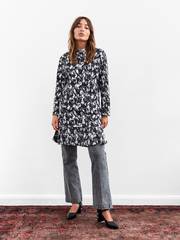
GH: Can you talk us through the design process for the Toga Pulla S/S19 collection - the inspiration behind it and what you feel the standout pieces are?
YF: Voluminous sleeves. Hems pulled tight on sweaters, coats and shirts like the base of a curtain. Skin is exposed with a bold slit in a dress, the pulling of the drawcord to manipulate the garment, a teardrop-shaped hole decorated with embroidery.
Mesh and vinyl are used to reveal skin, but juxtaposed with classic shapes and garments. The silhouettes of the outerwear can be changed with functional drawcords.
Marble prints in neon shades, floral jacquard woven in opposing colours. Indian embroidery and Cuban shirting.
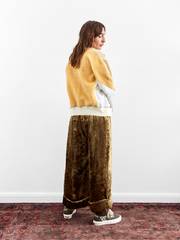
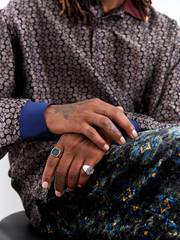
GH: How would you describe the Toga woman?
YF: I create for a complex woman who can only live in chaos. Creating clothes with hidden complexity and nuanced layers. I don’t have any particular person (in mind), but I like a woman who is complicated and has many different faces and sides to her, existing in this chaos.
Considering a woman's wardrobe, I thought that it would contain plain t-shirts as well as a gorgeous coat, and a boy-sized item next to that and also an embroidered shirt, and so on. They're all unified by the owner's sensibility. But what if a brand were to offer the entire wardrobe? That way, even if she doesn't like a particular season's collection, the TOGA customer can still come to the shop. That's my ideal.
GH: In the past, you’ve mentioned the differences between sensuality and outright sexuality in fashion - how important do you think sexuality is to fashion?
YF: I think about women around the world with Japanese culture as the base. I don’t think that showing everything is sexy — showing partially is much sexier. It makes you imagine what the hidden part would look like.
Here, sexuality is more about self-awareness, expressing your own identity on your own terms. Showing doesn’t always have to be sexual. That engages a sense of power for the wearer. Which brings us to feminism, a word coming up more and more in fashion.
"SEXUALITY IS MORE ABOUT SELF-AWARENESS, EXPRESSING YOUR OWN IDENTITY ON YOUR OWN TERMS."
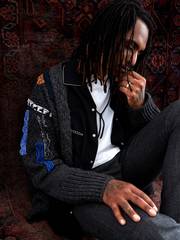
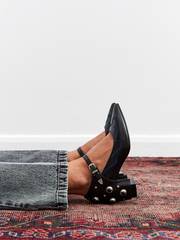
GH: What is your perception of femininity - do you consider yourself a feminist?
YF: I have been a strong feminist for a long time. Since I started this company, I have been trying to make an environment in which women can freely express their opinions. For example, I could change the weird corporate culture of being forced to wait for your boss to finish work before you can leave the office. These days, young people are really interested in feminism. I met a young female photographer who was really into Raich? Hiratsuka, who is considered to be the first Japanese feminist. Having conversations on feminism and being conscious of it is normal for young people.
GH: What's next for Toga?
YF: I’m climbing intently but headed toward a landscape I’ve never seen. Ideally, wherever I am, that place will indicate my next goal and destination. With TOGA, I need to think - Would it be something that our staff would be happy to work on and offer to the world? Step by step, I begin to feel more strongly that I should be doing it. Once I get to that point, I make it happen no matter what. I’m constantly searching for what we can be proud of.



